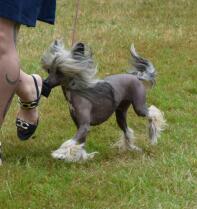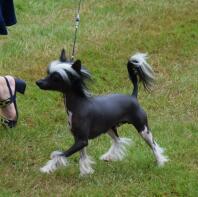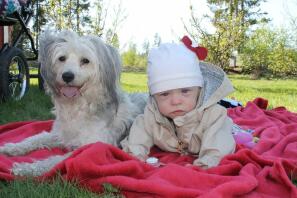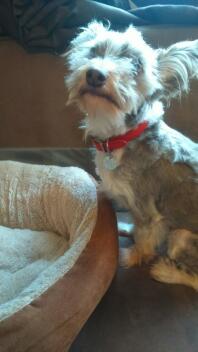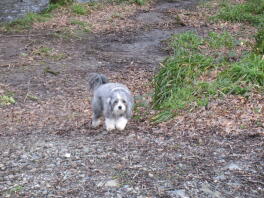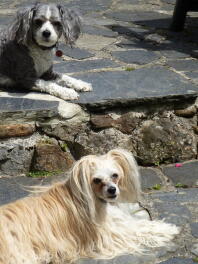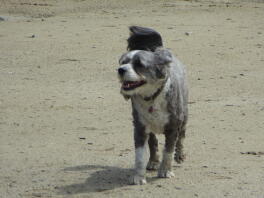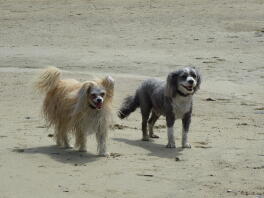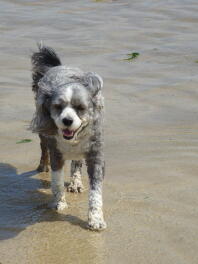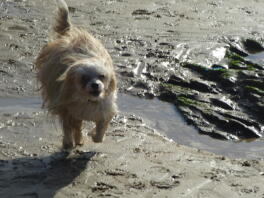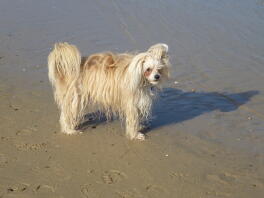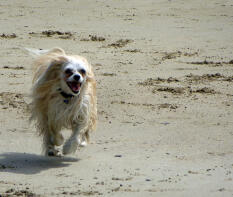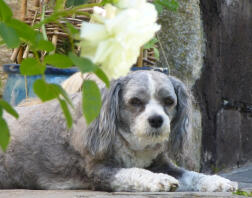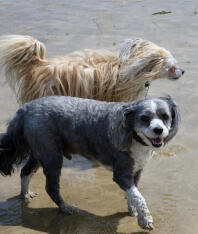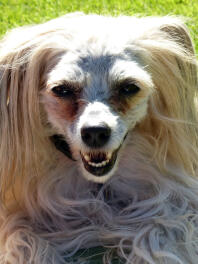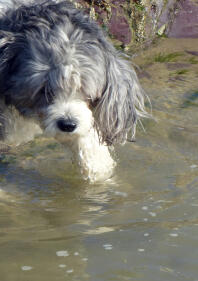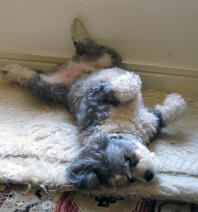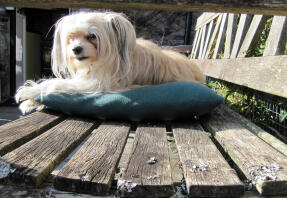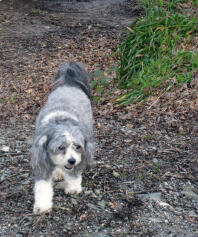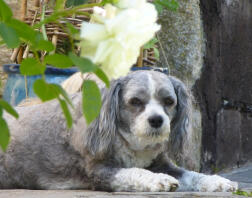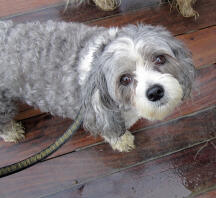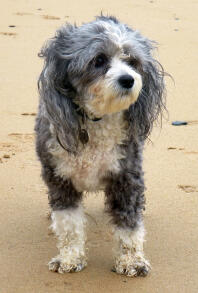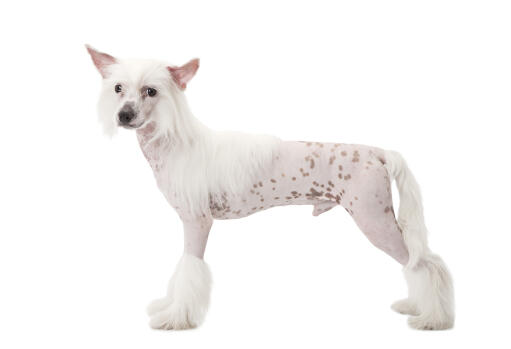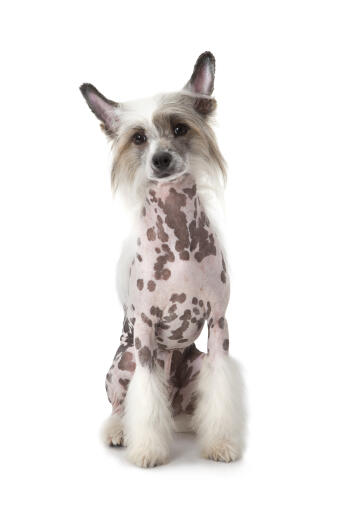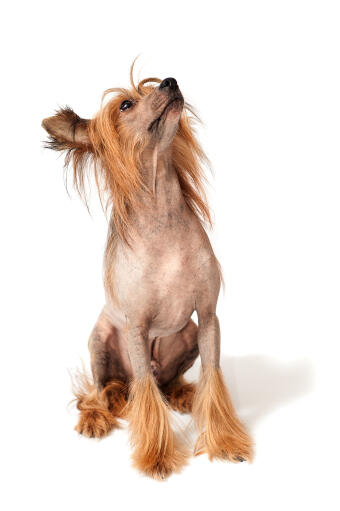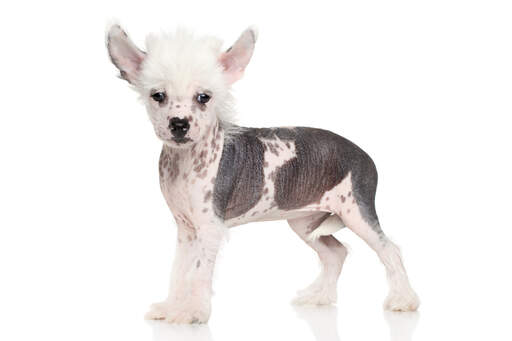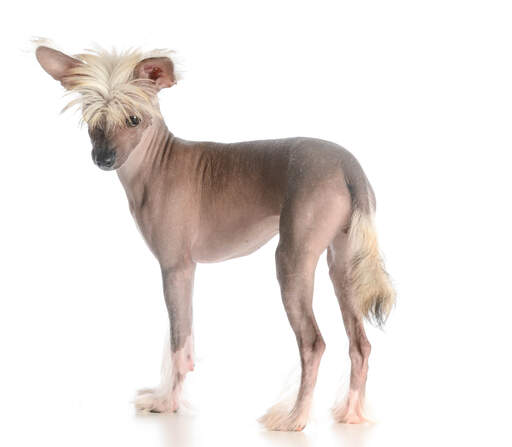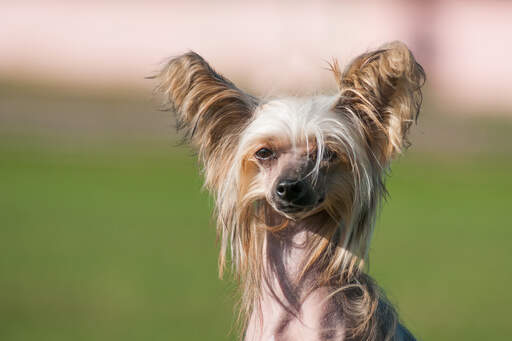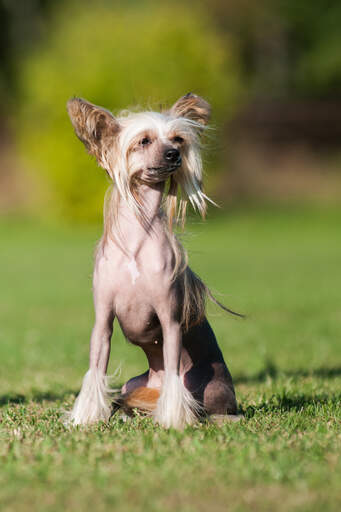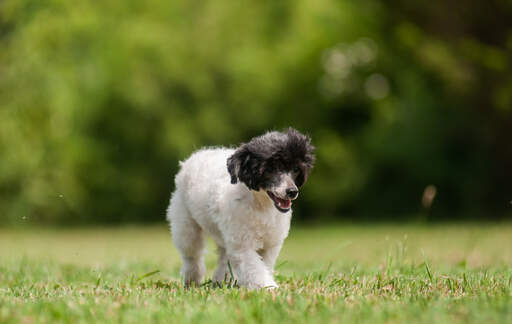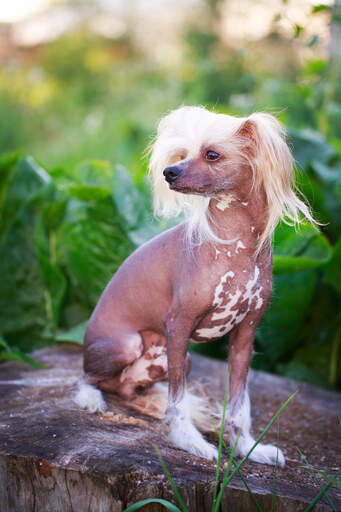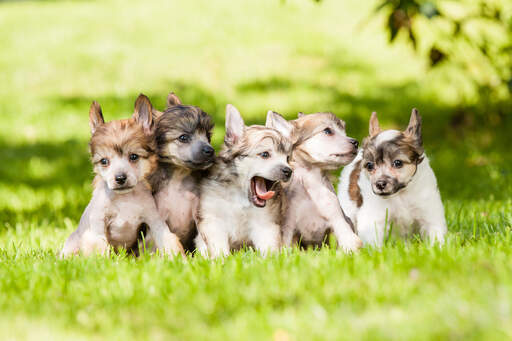Chinese Crested Dogs










History
Thanks to modern day genetic technology, we now know that this dog has its roots in the Mexican Hairless dog, and not the African Hairless terrier as was once believed. In the 1950’s a breeding program was begun and by 1987 the breed had become officially recognized. All litters will contain hairless and non-hairless (Powderpuff) puppies. The hairless gene is dominant, but all Hairless Crested have the ability to produce a powder puff puppy due to a recessive gene.
Behaviour
Both the hairless and powderpuff variations are playful little dogs who enjoy human love and companionship. They are great family dogs, as they get along with children and other household pets. They can sometimes be wary of strangers, but this is more due to the fact that they are timid by nature, not due to aggression. They love to be around people and, if given the chance, will happily play with you all day. You can expect cuddling and affection from this breed, but make sure you have the time to spend with them as they will get unhappy if alone for long periods of time. Due to this, they are best suited for someone who is home for most of the day. They can also be great therapy dogs. Unlike many other small dogs, this breed isn’t particularly yappy and rarely even barks. They can howl, however, and have even be taught to “sing”. Like many other small dogs they shiver when excited or nervous. They are relatively easy to train and some do well in agility and obedience classes.
The key to this breed is companionship, as without it the dog will be unhappy. Due to their small size, Chinese Crested have minimal exercise needs and will be satisfied after a short walk or a game of fetch in the garden. The hairless variety will need a coat in winter and some form of sun protection in summer to prevent sunburn (this is especially true in dogs with lighter colors). Their skin is also prone to drying out, so you will need to apply a moisturizer a few times a week. Powderpuff grooming should be done little and often to help keep the coat in top condition. These dogs don’t really shed and are classed as a non-shedding, hypoallergenic breed. Keep in mind that a hairless dog’s skin needs the same care as human skin. They can suffer from acne, sunburn and dryness. Non-lanolin creams are best as some dogs can have an allergic reaction to lanolin.
When it comes to health, like many other “toy” breeds, these dogs can suffer from patellar luxation. Breeders will usually have their dogs checked/certified. Hairless Crested can also have problems with their teeth, whereas this is much less common in the powderpuff variety.
Temperament
Chinese crested dogs are loving and playful. They will be loyal to their family and, for the most part, will get along well with other dogs too. Early socialization during puppyhood can help prevent timidity and plenty of reward based training will help prevent mischief.
This dog will become fully dependent on its family, loving to be the center of attention and hating to be left alone.
Health Problems
Chinese Cresteds can be affected by progenerative retinal atrophy (PRA: degeneration of the retina which can lead to blindness), patellar luxation (dislocation of the knee cap) and lens luxation (dislocation of the lens within the eye that can cause blindness).
Breed Details
- Status: Common
- Life Expectancy: 13 - 15 years
- Weight: 7 - 12 pounds
- Height: 10 - 13"
- Rare: No
- Coat: Short
- Grooming Requirements: Once a week
- Town or Country: Either
- Minimum Home Size: Flat
- Minimum Garden Size: No Garden
- Breed Type: Toy Dog
- Size: Small
- Energy Level: Medium
- Exercise Required: Up to 30 Minutes
Chinese Crested Pictures
